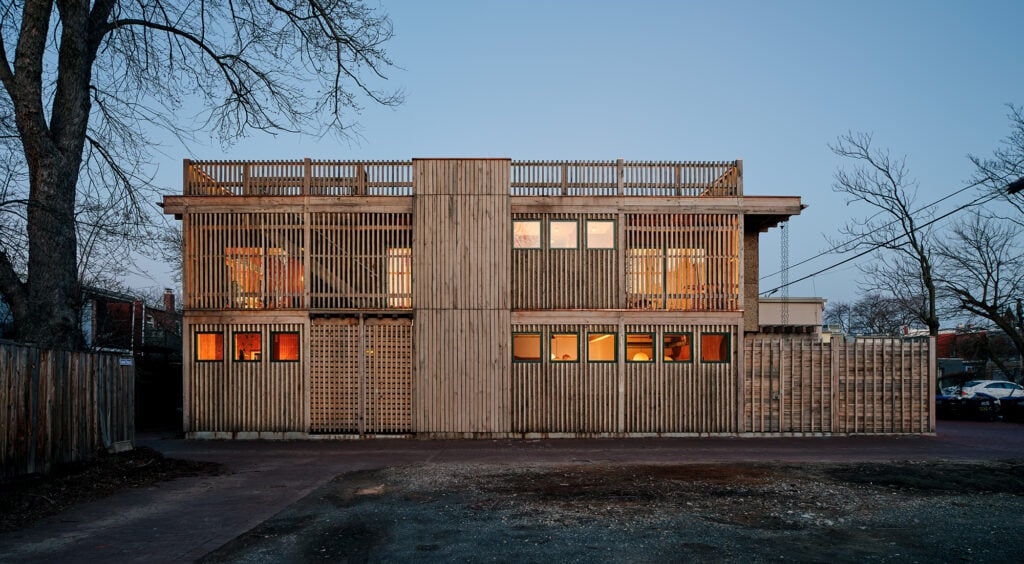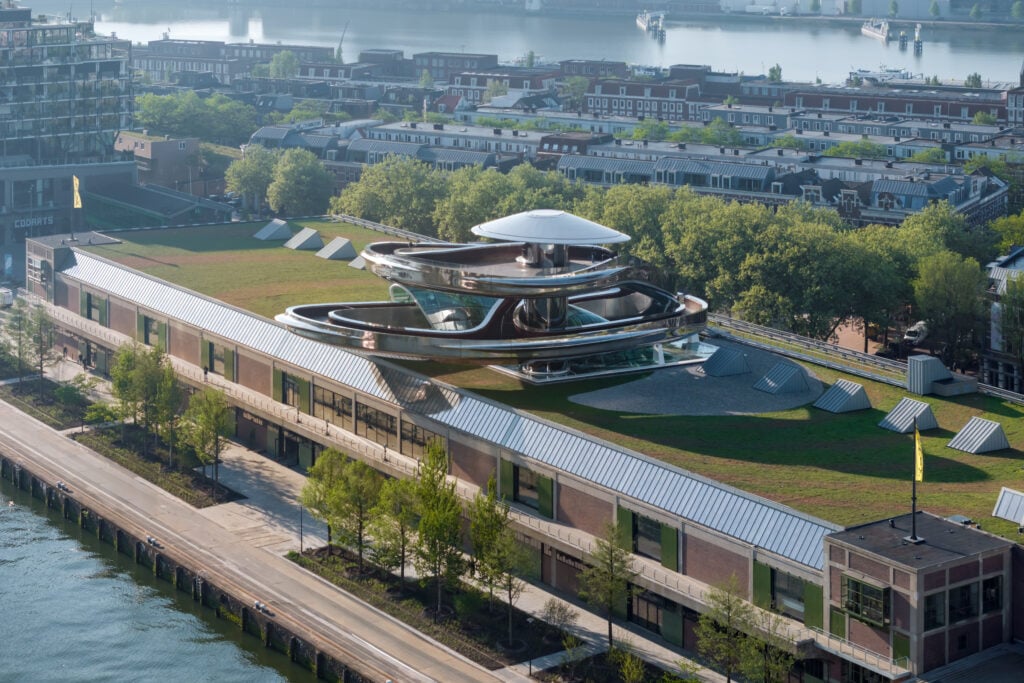
November 29, 2023
The Past, Present, and Future of Public Outdoor Space
“Our country’s current monument landscape offers an incomplete—and even inaccurate—picture of the nation’s complex and diverse history.”

PAST: Monumental Moves
In 2022 the Southern Poverty Law Center (SPLC) recorded the existence of 2,089 Confederate memorials and statues throughout the United States. Whether they enrich or taint citizens’ experiences of public spaces depends on whom you ask: Described as “symbols” of heritage and pride by many white Southerners and descendants of Confederate soldiers, the structures are viewed by Blacks as harmful vestiges of a white supremacist system erected to intimidate descendants of the enslaved and glorify racial subjugation.
After the murder of George Floyd triggered a sea change in attitudes toward these monuments, more than 160 “symbols of hate” were removed from public property in 2020 alone, the SPLC says. To keep that momentum in the months following Floyd’s death, the Andrew W. Mellon Foundation vowed to use its coffers to accelerate that shift and change the notion of public commemoration.
The foundation specifically pledged to spend $250 million helping reimagine America’s approach to monuments and memorials. Launched as one of its Presidential Initiatives, the Monuments Project is designed to better reflect the nation’s diversity with new monuments that highlight buried and marginalized stories. Under a five-year plan, the New York–based private philanthropic group is committed to rebuilding commemorative spaces and transforming the way history is told in the United States.
Mellon’s official position is that its program is needed because monuments and memorials instruct us in understanding the past. “They shape powerful national narratives that say some of us ought to be visible and celebrated, and some of us ought to be invisible and ignored,” the group said in a statement, which concludes, “Our country’s current monument landscape offers an incomplete—and even inaccurate—picture of the nation’s complex and diverse history.”
As part of the project, Mellon is enthusiastically channeling grant money to fund new monuments and memorials as well as other educational efforts.
But can bankrolling monuments truly change our patterns of commemoration and improve the way some of us experience public spaces?
Ty Seidule, a retired brigadier general in the U.S. Army and a visiting professor of history at Hamilton College in Clinton, New York, is a fan of what the Mellon Foundation is doing and applauds its efforts. But he expresses a cautious outlook, given that a large part of commemoration is about values and what inspires us today.
“Commemoration isn’t about who you’re putting the monument up to. It’s about the people in power,” says Seidule, who was also vice chair of the Naming Commission to rename U.S. military bases. “It’s a reflection of your values. So for instance, why do we have monuments of Columbus everywhere? It’s an understanding that the Italian Americans had power, and they had the ability and funds to erect monuments that reflected their heritage.”
For Seidule, whose latest book is titled Robert E. Lee and Me: A Southerner’s Reckoning with the Myth of the Lost Cause, tearing down Confederate statues is a must. Many of these monuments, he says, were erected as a means of intimidation in neighborhoods, schools, and areas that had large African-American communities.
Those are exactly the kinds of communities the Mellon Foundation aims to affect with its recent announcement of nine new grants totaling $25 million to fund “publicly oriented initiatives” in municipalities. That brings its total number of grants to 67. The nine newest support projects are in Asheville, North Carolina; Boston; Chicago; Columbus, Ohio; Denver; Los Angeles; Portland, Oregon; Providence, Rhode Island; and San Francisco.
To Seidule, the intention of such investments is clear: “What they are saying is ‘Hey, we’re the Mellon Foundation. We have an enormous amount of resources, and we have the ability to help communities put these up in a way that reflects the values of 2023.’ ” —Nigel F. Maynard

PRESENT: Milwaukee’s Best
Like many cities across America, Milwaukee’s parks department has faced ongoing funding challenges to deliver on its maintenance, programming, and support goals. Unlike many cities across America, Milwaukee has turned to a unique solution: beer.
This summer, thanks to the city’s growing beer garden program, locals returned to Milwaukee parks in numbers, making them some of the city’s most frequented third places. And the program is not only condoned by local government but designed, led, and staffed by the county.
According to Joe Mrozinski, assistant director of business services with Milwaukee County Parks, this model of bringing operations and business services in-house diverges from most other cities’ parks and recreation departments, which normally outsource those services (think food and beverage, programming) to third-party vendors.
What difference does this make in Milwaukee? To its parks and recreation budget, a lot. Whereas other cities’ systems are 12–15 percent self-sustaining in their financing due to splitting profits with those vendors, Milwaukee’s parks department is closer to 50 percent.
“Over the last 15 to 20 years we’ve become creative in how we can maintain services through different business approaches,” says Mrozinski. “And the beer garden model adds millions of dollars a year to that bottom line that we can then use for playgrounds, hiking and biking trails, pools, and green space. Without those profit centers, a lot of those things would be reduced or eliminated.”
Since 2012, the beer gardens have expanded from $82,000 to nearly $2.8 million in annual revenue. Beyond bringing in much-needed funding, the program has activated Milwaukee County’s entire parks network and provided a boost to smaller parks that have been able to leverage temporary attention from the traveling beer garden into expanded programming, new volunteers, and increased memberships for local “friends of the parks” groups. According to Mrozinski, the program also provides a forum to foster connections between neighbors.
Now cities across America are looking to Milwaukee. Mrozinski estimates he’s been approached by over two dozen cities across North America looking to their model.
Culturally, the beer garden program is a return to Milwaukee’s roots in what has been referred to as the most German city in America. What started over ten years ago with one beer garden has taken off with three different models weaving across parks every year between April and October—including the original location at Estabrook Park, six summerlong beer gardens, and the now-iconic traveling beer garden, which will visit multiple parks this year. For the traveling beer garden, the department partnered with Sprecher, Milwaukee’s oldest craft brewery, which had one request—that they dispense the beer from taps attached to decommissioned repainted fire trucks.
Mrozinski and his team have showed how these efforts, when planned strategically and with care, can reframe residents’ negative preconceptions that allowing alcohol in public spaces will lead to increased crime, antisocial behavior, and litter. “It couldn’t have been further from the truth. We needed to show people a busy park is a safe park,” says Mrozinski. And they’ve been able to pull off the program with minimal environmental impact: All beer garden locations serve drinks in reusable branded souvenir glasses, with over 70,000 distributed each year. —Rebecca Greenwald

FUTURE: Urban Dissection
In 2005 the journal Atmospheric Environment published a study on air pollution and early deaths in the United States. It concluded that Baltimore, at the time, had the highest total mortality rate from a variety of combustion sources, such as transportation and electric power generation.
The air has improved somewhat, but the city remains vulnerable owing to urban sprawl and its large number of heat-trapping surfaces and structures, which is why it is now among the recipients of an Energy Department grant to develop Urban Integrated Field Laboratories. Led by Johns Hopkins University, the Baltimore Social-Environmental Collaborative Urban Integrated Field Laboratory will study the interlinked challenges of aging infrastructure, increased heat and flood risk, and inequitable burdens of air and water pollution that are common to many other midsize industrial cities in the eastern and midwestern United States. The project will receive $25 million over a five-year period.
Mac McComas, senior program manager for Hopkins’s 21st Century Cities Initiative, which will run Baltimore’s Field Lab program, says even climate scientists and engineers who are good at modeling and measuring impact at the national and regional scale face more unknowns when it comes to cities. That’s because current assumptions based mostly on rural and suburban areas can, as McComas puts it, “start to fall apart a little bit with the complexity of buildings, urban spaces, and parks and the interaction between all of those.
A separate but important part of overcoming that obstacle is to push for collaboration with local communities, unlike the old approach of scientists and wonks working on climate models in their offices, far removed from people experiencing the effects. The Baltimore teams will partner “with both city agencies and local neighborhood groups to say, ‘Well, if you’re experiencing some of these climate challenges locally, what kind of solutions are you interested in? And are they feasible?’” McComas explains.
A significant portion of the program’s funds will go toward field equipment such as weather stations, flux towers, sonar, and stream gauges. The idea behind these interventions, he says, is to build a hyperlocal network of measurements so that at the end of this project, Baltimore will be one of the most heavily instrumented cities in the world for measuring local climate.
Program leaders are hopeful that the quarter-million-dollar funding will be extended beyond its five-year agreement. “One of our goals is that this research will attract additional funding that can help extend the life of some of these measurement systems and lead to real investments in climate solutions that neighborhoods are interested in,” says McComas. —Nigel F. Maynard
Would you like to comment on this article? Send your thoughts to: [email protected]
- No tags selected
Latest
Products
Windows and Doors for Better Views—and Performance
The latest window and door systems balance sleek design with sustainability and high performance.
Profiles
BLDUS Brings a ‘Farm-to-Shelter’ Approach to American Design
The Washington D.C.–based firm BLDUS is imagining a new American vernacular through natural materials and thoughtful placemaking.
Projects
MAD Architects’ FENIX is the World’s First Art Museum Dedicated to Migration
Located in Rotterdam, FENIX is also the Beijing-based firm’s first European museum project.





